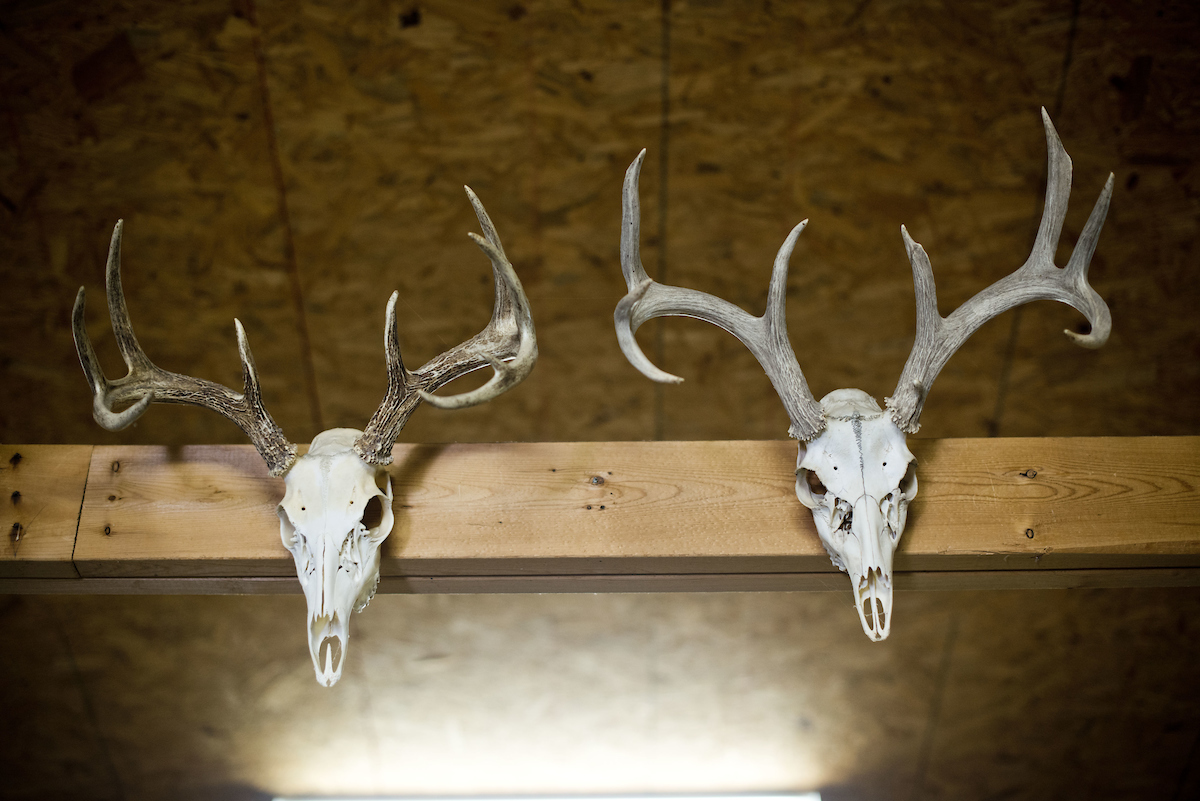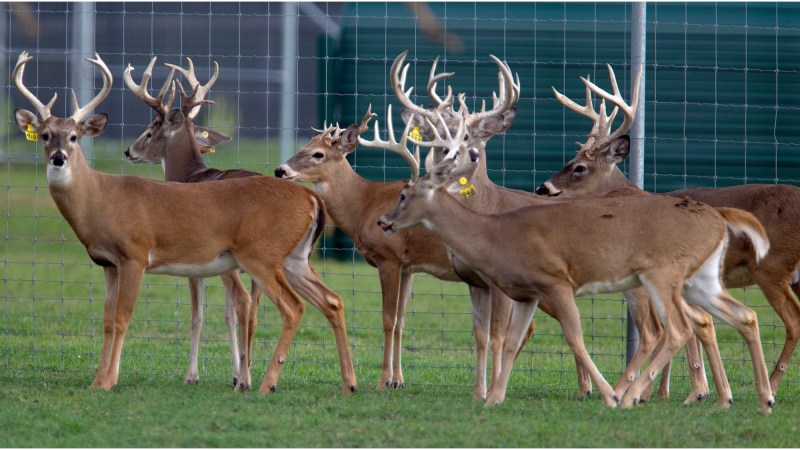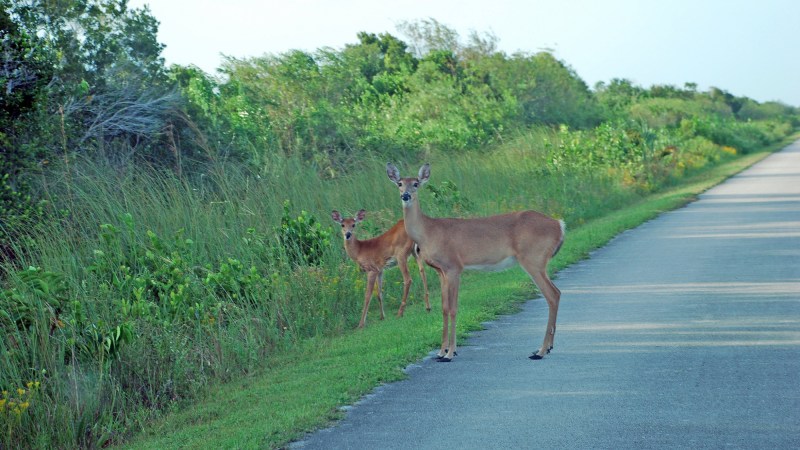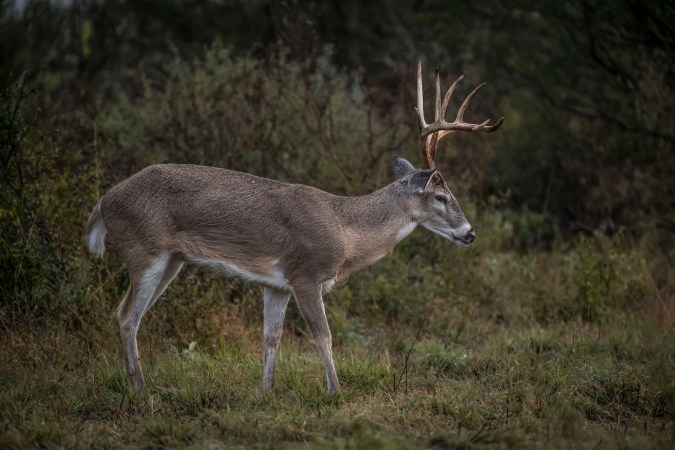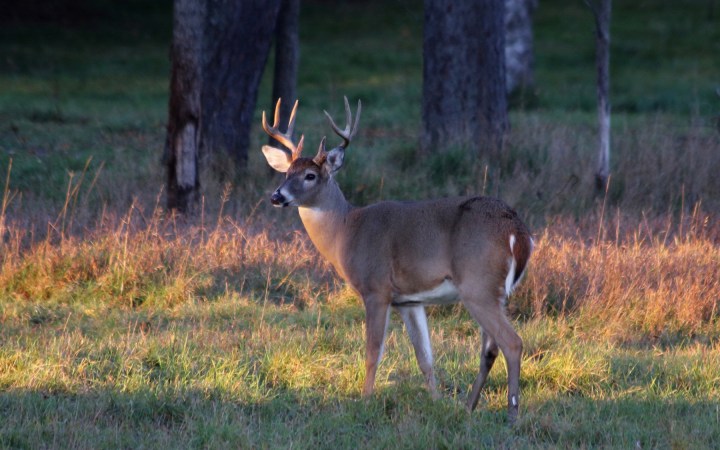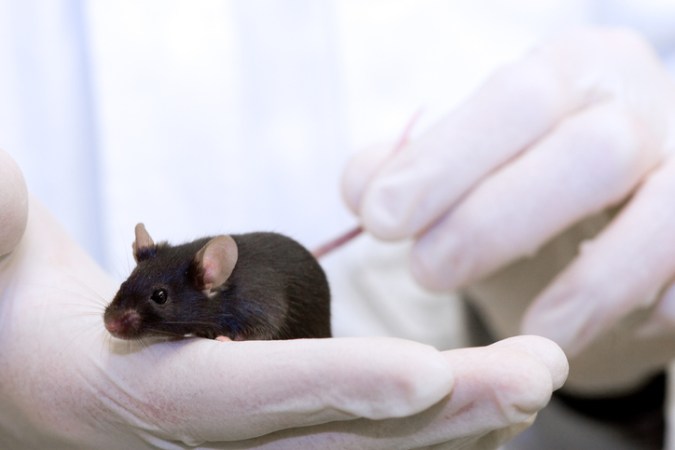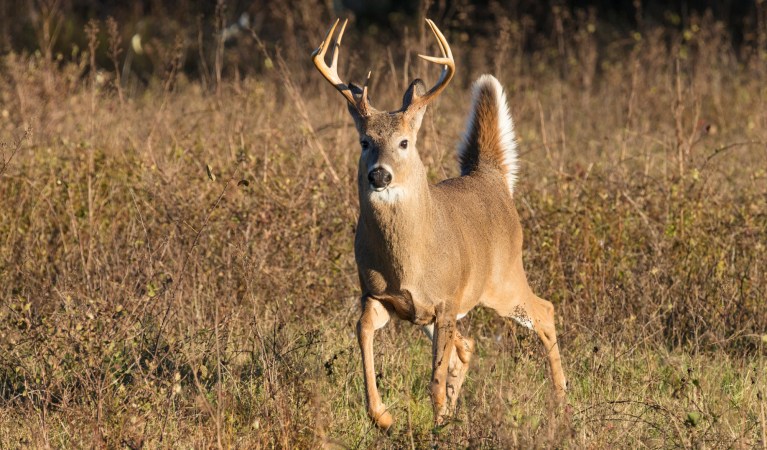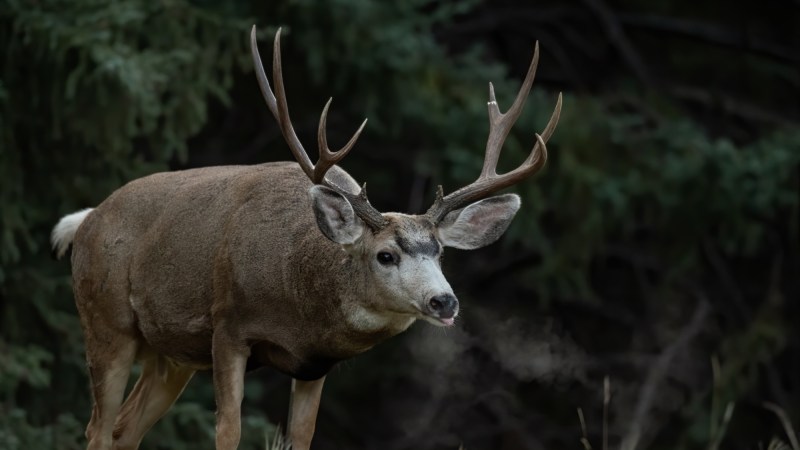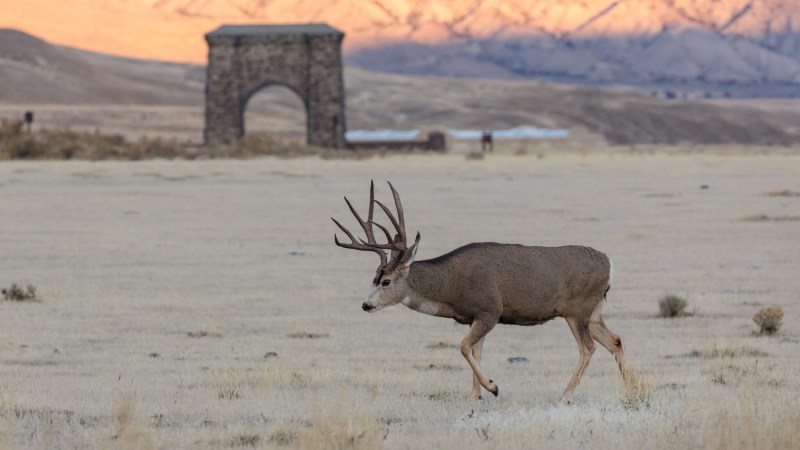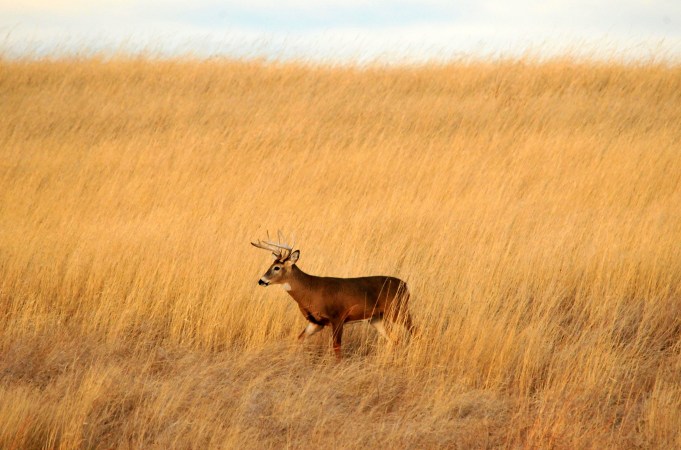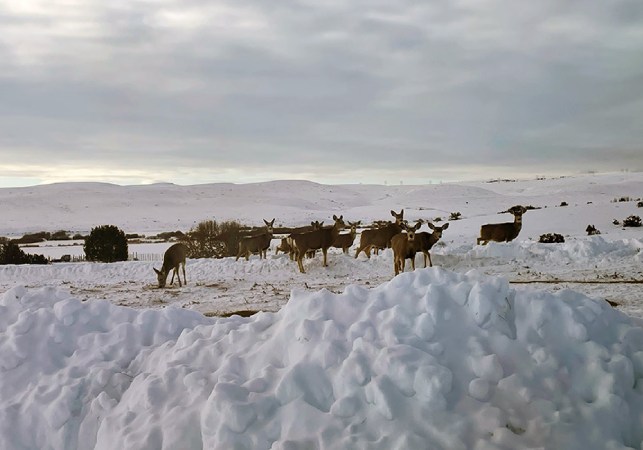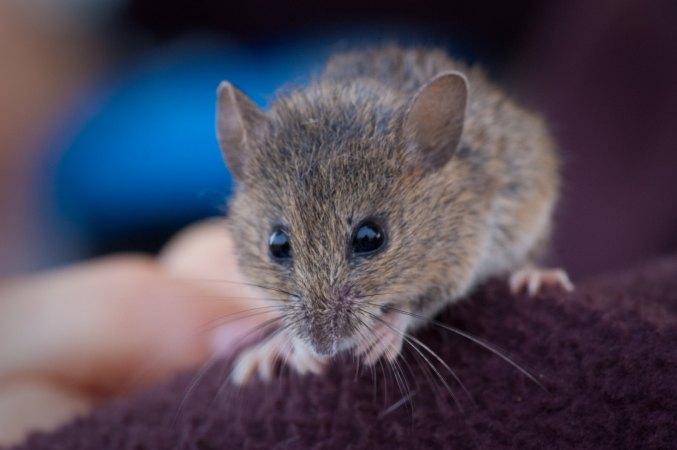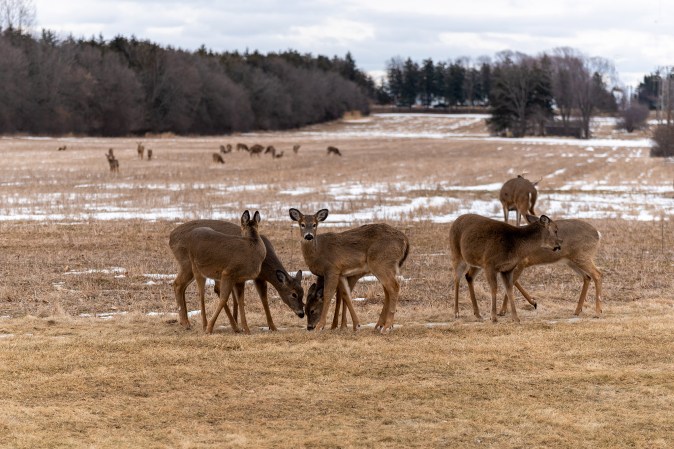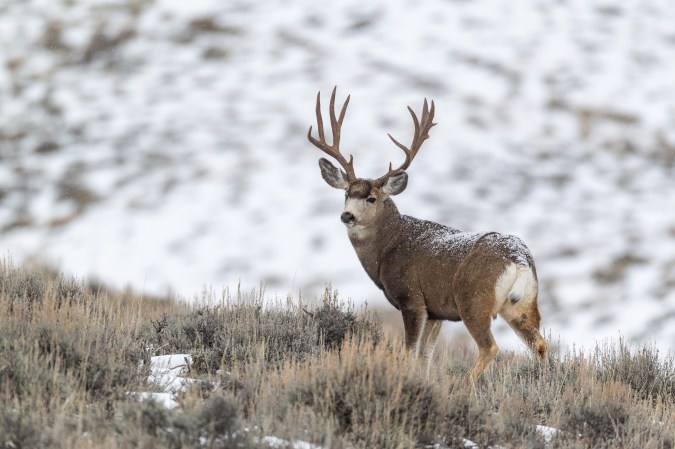If you Google news search ‘Zombie Deer’ you’ll find stories from a variety of media outlets including the San-Antonio Express News, Newsweek, Outside, and the Associated Press, with headlines declaring that zombie deer are spreading across America. Or, that the “zombie deer disease” will soon be transmitted to humans. What these publications refer to as zombie deer disease is actually chronic wasting disease, a neurodegenerative prion disease that infects deer, elk, moose, and caribou.
Chronic wasting disease (or CWD) is caused by a rogue protein that resides in the lymph and nervous tissues of infected cervids, as Andrew McKean wrote for OL in 2019. Those proteins, called prions, are passed on to other deer, and can remain in the soil of an infected site for years. Currently there is not evidence that CWD has ever been transmitted to humans, however the disease belongs to the family of transmissible spongiform encephalopathies (TSEs) that includes bovine spongiform encephalopathy (“mad cow disease”). Most experts as well as the federal Centers for Disease Control and Prevention recommend that humans not eat venison from CWD-infected deer.
Wildlife managers say that chronic wasting disease is the most important and dangerous disease threatening North American cervids.
Chronic Wasting Disease Facts
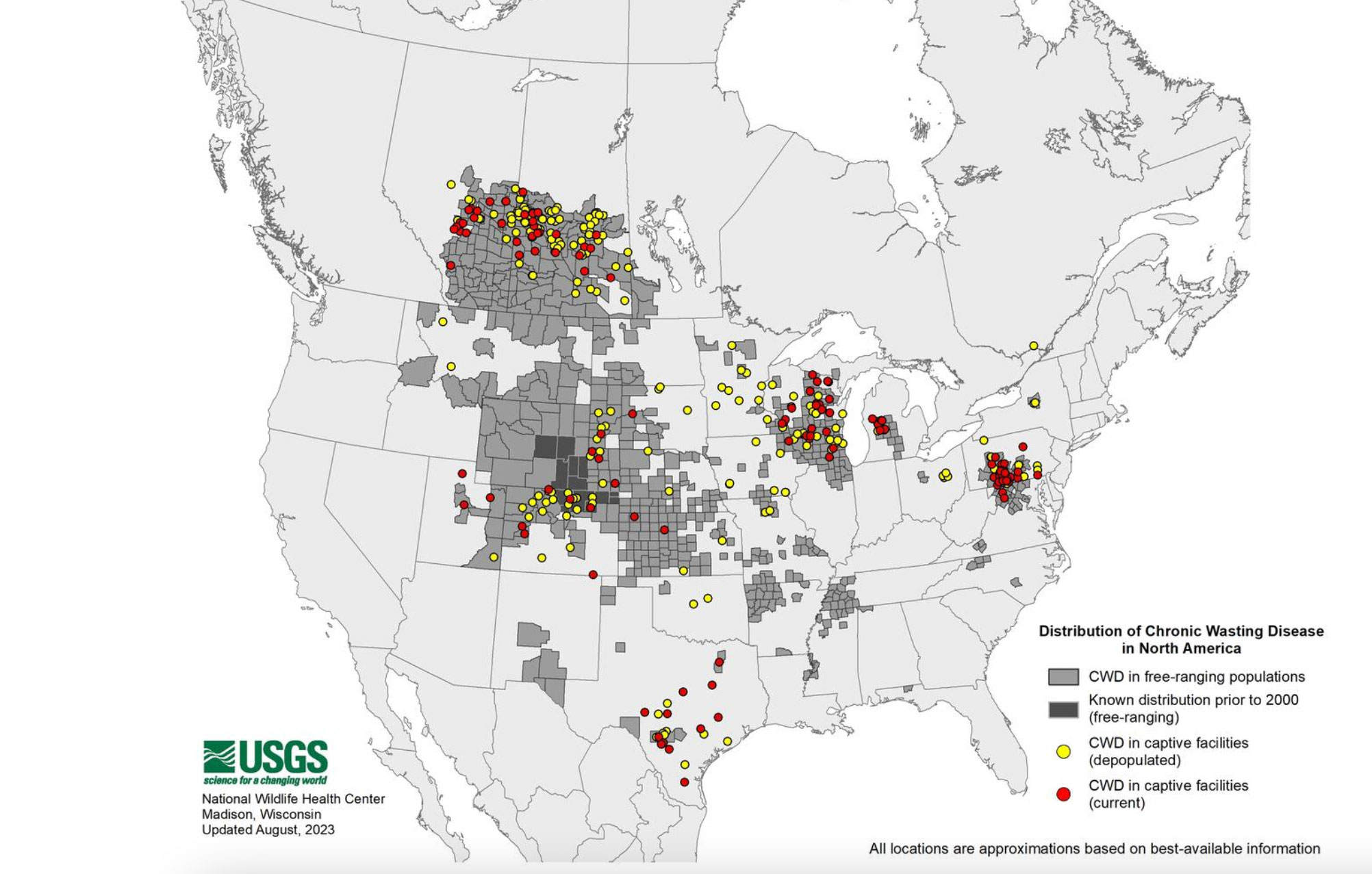
Forget about zombies for a moment. Here are some facts that you need to know about chronic wasting disease.
- Chronic wasting disease has been reported in at least 31 states and four Canadian provinces, according to the National Wildlife Health Center.
- CWD was first identified at a Colorado research facility in the late 1960s. It was discovered in wild deer about 20 years later.
- Chronic wasting disease symptoms include drastic weight loss, stumbling, lack of coordination, listlessness, drooling, excessive thirst or urination, drooping ears, and lack of fear of people.
- The disease develops slowly (with an incubation period of 18 to 24 months) and few deer actually reach the stage of showing clear symptoms of CWD. “Instead, the slow but unseen damage to the nervous system makes infected deer more susceptible to other causes of death long before they look sick,” writes Lindsay Thomas Jr. “They are hit by cars. They die of other diseases like pneumonia that healthy deer are better able to fight off. They fall to predators more easily.”
- There is no known cure for CWD.
- Older bucks are more likely to carry chronic wasting disease than does, with adult bucks being about twice as likely to be infected, according to the National Deer Association.
- Prevalence of CWD varies widely from region to region and from herd to herd. A 2021 report from Wyoming found a prevalence rate of over 50 percent in some herds, meaning more than half of the deer sampled from the herd had CWD.
- No state has been able to cure its deer herds of CWD. However some states have effectively slowed its spread. Illinois removed 1,107 deer from 16 CWD-infected counties in 2020. “These small removals provided big dividends by removing a higher percentage of CWD-positive deer from the landscape,” according to the NDA. “Targeted removal programs are a great way to remove CWD-positive deer with the least amount of disturbance to hunters.”
READ NEXT: Here’s What Top Chronic Wasting Disease Researchers Can’t Say on the Record
Why the Term “Zombie Deer” Is Problematic
This inaccurate terminology is troubling for two reasons. First, it gives people a poor understanding of CWD. Second, the hyperbole helps spread CWD conspiracy sentiment.
It’s an Inaccurate Description of CWD
The main problem with the term “zombie deer” is that it creates the idea that CWD-infected deer are staggering about the woods looking to attack a hiker and eat their brains. Lindsay Thomas is the chief communications officer for the National Deer Association and the editor of their quarterly magazine which has covered CWD carefully and thoughtfully for years, and he had this to say about the term:
“I know the news media is just trying to get more clicks from a mainstream audience that may not otherwise care about wildlife diseases, but they are doing real damage both to the public’s understanding of this issue and to the hunting community’s efforts to unite against this threat.
Deer that are dying of CWD don’t have a single thing in common with the popularized image of zombies. In the late stages of the syndrome, you’re talking about an animal that can barely stand much less get aggressive. But deer in the wild, outside of captive laboratory observation, rarely reach that stage. Research shows CWD-infected deer start suffering higher mortality rates from predators, vehicles, and other diseases long before they start showing outward signs of CWD itself. So, even a hunting media outlet that shows a photo of a skin-and-bones deer as an example of a ‘CWD deer’ is misleading its readers.
Deer can be infected with and spread CWD to other deer for one to two years before they begin to show visible signs of infection. So, the vast majority of CWD-infected deer that the public and hunters encounter will look completely healthy and appear to behave normally.”
It Fuels CWD Conspiracy Talk
There is already so much misinformation and so many conspiracy theories about CWD circulating in the hunting community. The last thing we need is for major media outlets, which many folks already distrust, reaffirming CWD non-believers by running insane headlines that no one with knowledge of the subject will take seriously. This kind of hyperbole is dumbing down the entire conversation at the very moment we need to be having a real, national discussion about how to better manage captive deer and wild whitetails during the CWD age.
For example, the Daily Beast ran this headline in 2019: “Brain-Eating Zombie Deer Disease Will Likely Spread to Humans.” Any hunter from a CWD-infected area knows that this headline is total bullshit. And if that hunter already thought CWD might be a hoax, this kind of exaggerated news story only confirms their beliefs. If we never get past the point of arguing about how big of a threat CWD actually is to whitetail deer and deer hunting, we’ll never move on to discussing possible solutions—like which herd harvest strategies do and don’t work for limiting the spread or petitioning for federal funding to advance CWD testing.
Where Did Zombie Deer Come From?
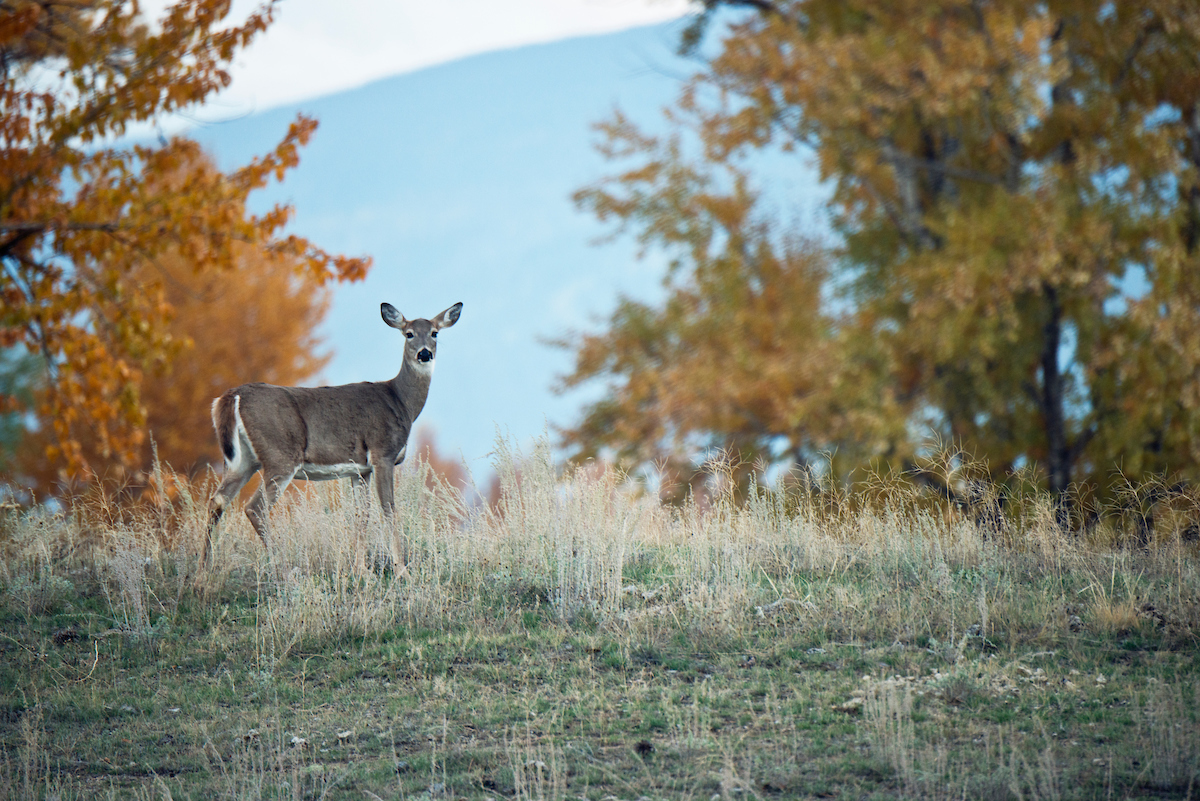
It’s worth noting that the term “zombie deer” is almost always used in quotation marks in major media stories. However, I have not been able to find the original scientist or research paper that called a CWD-infected deer a “zombie deer.” So, who are these news outlets actually quoting? For example, The Independent wrote this as its lede in a 2019 story: “Scientists have warned that ‘zombie deer’ are spreading across America and there is nothing that can be done to stop them.”
I was not able to find a single credible scientist quoted saying that directly, and I bet that you won’t be able to either. So, who did start calling CWD-infected deer “zombie deer”? These days it seems like every news story about CWD references zombies. But going back, I found a surge of stories referencing “zombie deer” in early spring 2019 when Michael Osterholm, director of the Center for Infectious Disease Research and Policy at the University of Minnesota, testified before state lawmakers about the possibility of the disease one day spreading to humans.
However, a few weeks before those stories broke, Livescience.com published a story titled “Could ‘Zombie Deer’ Disease Spread to Humans?” on January 23, 2018. That story links to a Livescience.com opinion piece from 2013 which reads “state wildlife managers are deeply concerned that these zombie deer will infect free-roaming deer…”
This op-ed was written by Wayne Pacelle, the former President and CEO of the Humane Society of the United States, one of the most powerful anti-hunting organizations in the country. Pacelle eventually resigned from the HSUS amid sexual harassment allegations, but when this opinion piece was published in 2013, he was still the face of the organization.
In 2012 there was a Science Daily report that referenced “zombie protein.” Beyond that, I can’t find an article earlier than this from a major news source that references “zombie deer.” Patrick Durkin, who has been diligently reporting on CWD for 20 years, doesn’t recall seeing the term being used in chronic wasting disease news stories before 2019. So, it’s at least possible that the term “zombie deer” was partly popularized by disgraced anti-hunting zealot Wayne Pacelle.

